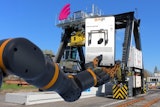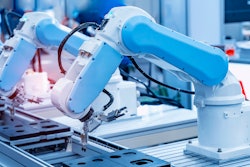Festo develops and supports projects that have basic technical principles derived from nature to arrive at its latest effort, the bionic dragonfly.
The Bionic Learning Network takes its design inspiration from nature. A partnership between Festo, various colleges and universities, and development companies, the network has produced a variety of intriguing products throughout the years. After successfully mimicking bird flight with the SmartBird, which is inspired by the herring gull, and can start, fly, and land autonomously – with no additional drive mechanism, the developers at the Bionic Learning Network took on their next big challenge, modeling the dragonfly at a technical level.
The result was the BionicOpter, a small, ultra-light aircraft. “Like its natural role model, the BionicOpter can carry out highly complicated flight maneuvers,” explains Dr. Heinrich Frontzek, head of corporate communication and future concepts at Festo.
Taking Flight
The mechanics of dragonfly flight are unique, as they are able to maneuver in all directions, glide without having to beat their wings, and can hover in mid-air. Their ability to move two pairs of wings independently enables them to slow down and turn abruptly. The dragonfly can also accelerate swiftly and even fly backwards. With the production of the BionicOpter, Festo has applied all of these highly complex characteristics to their design. “For the first time, there is a model that can master more flight conditions than a helicopter, plane, and glider combined,” says Dr. Frontzek, “It can move in any spatial direction.”
These specialized maneuvers are only possible because the BionicOpter is highly optimized with regards to its lightweight construction, the aspect of the design that proved to be the most difficult. Dr. Frontzek explains, “If we would have added further weight, like a camera or other sensors, the wing size would have had to be increased. To move bigger wings, larger motors would be needed, adding more additional weight. This would have meant changing the entire system and an optimization of the system for a second time.”
To continue reading the full article, click here to visit our partner publication, PD&D.























